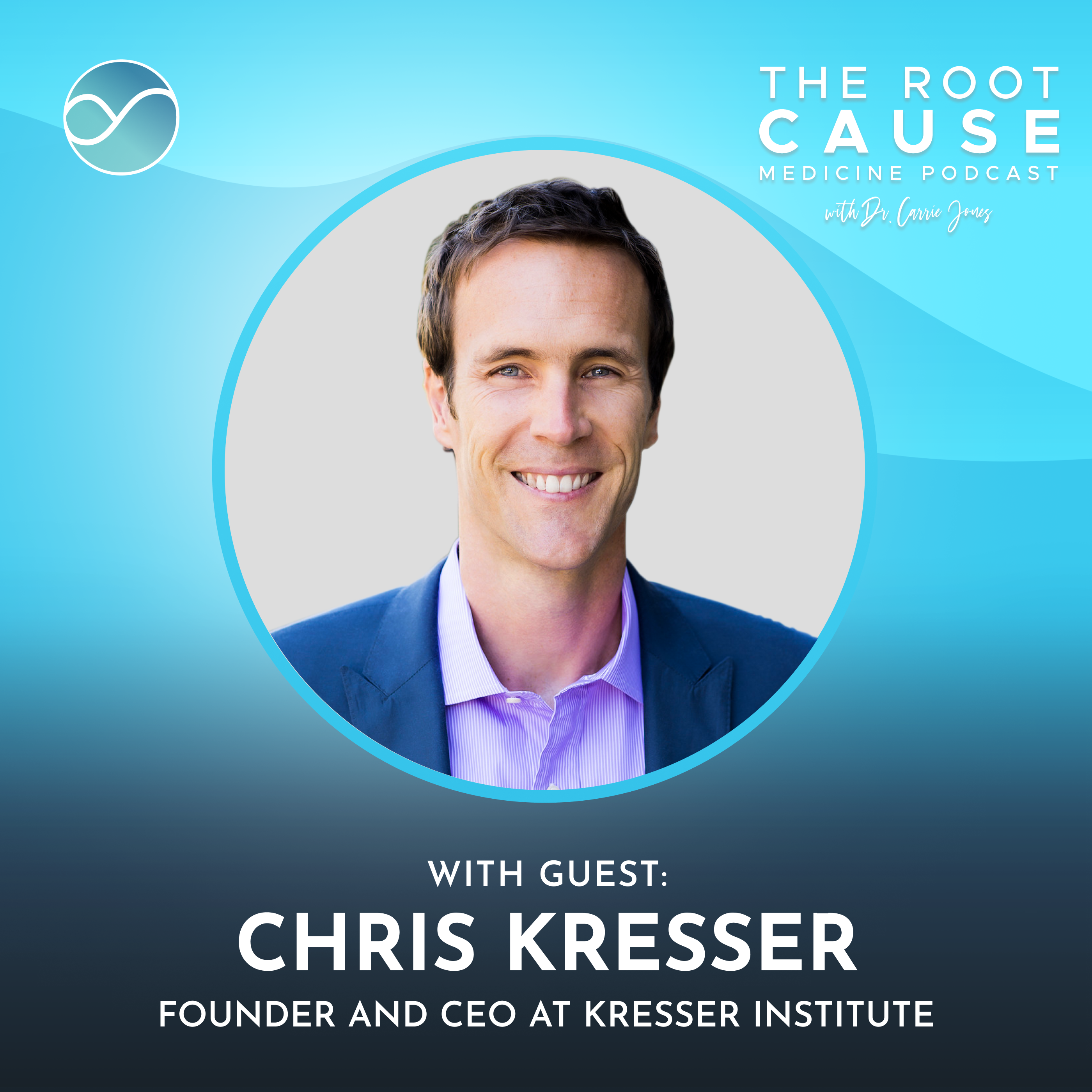How to Prevent Nutrient Deficiency and Feed Your Body Right with Chris Kresser

The Root Cause Medicine Podcast is created by Rupa Health, the best way to order, track & manage results from 30+ lab companies in one place for free.\n\nThe Root Cause Medicine Podcast is a weekly one-on-one conversation with renowned medical experts, specialists, and pioneers who are influencing the way we look at our health and wellbeing. This week we\u2019re joined by Chris Kresser, Founder and CEO of Kresser Institute.\n\nIn this episode, Chris Kresser and Dr. Carrie Jones dive into nutrient deficiency and talk about vital macronutrients and micronutrients, nutrient testing, RDAs, and more.\n\nChris Kresser is a globally-renowned expert, clinician, and practitioner of integrative and functional medicine. He is the creator of one of the world\u2019s most respected natural health sites, ChrisKresser.com, and a New York Times bestselling author of The Paleo Cure and Unconventional Medicine.\n\nChris was named one of the 100 most influential people in health and fitness by Greatist.com and launched the supplement line Adapt Naturals. In 2014, he co-founded California Center for Functional Medicine and, in 2015, founded the Kresser Institute. \n\nChris continues to tirelessly share evidence-based insights from reputable sources and renowned health practitioners and coaches through various channels such as his blogs, guides, webcasts, interviews, and his podcast, Revolution Health Radio.\n\nKey Takeaways:\n\nThe perfect diet\nA healthy diet should meet your nutrient needs. There are two major nutrient categories, macronutrients (protein, carbohydrates, and fat) and micronutrients (vitamins, minerals, and phytonutrients).\n\nWhen you break down micronutrients, there are nutrients that we get from animals and nutrients that we get from plant-based foods. Animal nutrients include vitamin B12, iron, zinc, vitamin A, creatine, vitamin D, and high-quality protein. \n\nIf you're eating an exclusively plant-based diet, that doesn't mean you can't get these nutrients in other ways. But you have to acknowledge that animals are a much better source of these essential vitamins and minerals. On the flip side, vitamin C can almost be exclusively found in plant foods, as well as phytonutrients such as carotenoids, lycopene, betaine, and lutein.\n\nThe truth about nutrient testing\nThe processing and storage of nutrients vary within the body, thus necessitating a thorough examination of each nutrient separately. Obtaining a bodily fluid or tissue sample such as blood, saliva, or urine is insufficient for determining what nutrients are present. \n\nTake calcium, for instance, which is kept within a very narrow range in the blood. Testing calcium levels in the blood may appear favorable, but it may not reflect reality. Therefore, we typically rely on a dietary assessment tool like MyFitnessPal to determine calcium intake. Similarly, iodine can be examined via a twenty-four-hour urine test to assess recent iodine consumption, but it is not indicative of long-term levels. To accurately assess all nutrients, you have to run different tests.\n\nWhy does today's food have fewer nutrients?\nSoil quality degradation is a major factor impacting nutrient availability due to the disruption of the soil microbiome, which aids plants in extracting nutrition from the soil. Pesticides, herbicides, and industrial agricultural practices have restricted a plant's ability to obtain nutrients. Chris notes that consuming eight oranges today is equivalent to consuming just one orange for our grandparents in terms of nutritional value. Additionally, the globalization of the food system is also a contributor, as produce is often transported long distances and stored in unfavorable conditions, resulting in significant nutrient loss over time.\n\nUnpacking RDAs\nRecommended Dietary Allowances, or RDAs, are the levels of intake of essential nutrients that meet the known nutrient needs of a healthy person. RDAs were developed during World War II to create nutritious rations for soldiers. They have been updated over time, but the numbers still represent the minimum amount of a nutrient a person needs to avoid a malnutrition-triggered disease.\n\nHowever, RDAs don't take into account several factors that play a huge role in nutrient absorption and status, like gender, age, and health. Another issue with RDAs is that they don't consider bioavailability. When you see the amount of a nutrient listed on a food label, you might assume that you will absorb a hundred percent of that amount, but you would be dramatically wrong.\n\nRDAs also don't consider nutrient synergy. There are many cases where the presence of one nutrient helps with the absorption of another one. Magnesium is required for the bio utilization of vitamin D and vice versa. If you are getting enough vitamin D through sun exposure or supplements, but you are magnesium deficient, you will still have low biological activity of vitamin D.\n\nAlso, check out Chris\u2019 recommended lab testing: intracellular magnesium test, iodine test, and blood, urine, and saliva tests for nutritional deficiencies. \n\nOrder these tests through Rupa Health - https://www.rupahealth.com/reference-guide